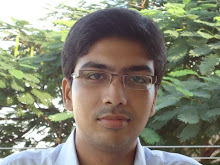How much time will Chairman Bill Gates spend at Microsoft after he retires?
I got that answer during the cocktail reception before the D Conference officially opened last night in Carlsbad, Calif.
I was surprised to see Bill at the reception; after all, in just about 45 minutes he would take the stage with Microsoft CEO Steve Ballmer and D6 organizers Kara Swisher and Walt Mossberg. He was surprisingly relaxed, or maybe not so surprisingly. For someone so often in the spotlight, maybe Bill can just be himself anywhere.
As I approached, he was speaking about the Bill and Melinda Gates Foundation and projects where Microsoft software might be involved. "I use my own money," Bill said, rather than the Foundation's. I was impressed by that statement.
It's inevitable, given the popularity of Microsoft software, that the charitable organization would have projects where the company's products would be involved. That's a sticky area, rife with potential conflict of interest. Bill made clear that the simplest solution was to pay himself. It's a fine distinction, given that a large portion of the Foundation's endowment comes from the Gates, but an important one nevertheless. The approach sets a high standard for the use of public money.

Bill Gates catches an early cocktail minutes before a small mob of reporters encircles him and asks questions about leaving Microsoft.
Bill next answered somebody's question about his impending departure from day-to-day Microsoft operations. He is set to retire on June 30. But given that he is still chairman of the board and the largest shareholder, Bill will remain involved in Microsoft.
Right now Bill spends about 80 percent of his time at Microsoft and another 20 percent at the Foundation. From July 1, that 80-20 will flip around, with more of his time dedicated to the charitable endowment.
"My main office will be either at the Foundation or at Microsoft," Bill said.
As I stood listening to Bill, TechCrunch co-editor Michael Arrington joined the listening circle. I had seen Michael lurking about the lobby area earlier. I've never met him, and this was the first time I had ever seen him. He circled around Gates, with fiercely piercing eyes but the look of someone uncomfortable with the venue. There was a shark-like concentration as he flowed among the cocktail crowd.
While we listened to Bill, Michael pulled out an iPhone, which he quietly used to snap some pics. Here's the image he posted. That's me wearing a camera and gawking at Bill. By coincidence, I snapped a pic of Bill, while Michael stood by sending images (presumably by e-mail) using his iPhone.

TechCrunch's Michael Arrington (in background) sends picture of Bill Gates on an iPhone.
Michael wasn't the only reporter blogging or photo blogging D6 live. I saw many others, including CNET News.com's Ina Fried, who tapped, tapped on a Palm Treo.
I was surprised to find myself intimidated by the number of high-profile technology CEOs milling about. Besides Microsoft's chairman, I saw CEOs: Amazon's Jeff Bezos, who is skinnier and shorter than I expected; Revolution's Steve Case; Michael Dell; SmugMug's Don MacAskill; and Sony's Michael Stringer. Those are simply the people that I recognized. Oh, yeah, and I saw Steven Sinofsky, Microsoft's senior veep for the Windows and Windows Live Engineering group, lurking about, too.
The D Conference is held annually at the Four Seasons resort in Carlsbad, Calif. I drove about 35 miles from San Diego to attend the opening gala. Paying attendees got a bag full of swag and Guitar Hero III for the Wii. I laughed at arriving guests carrying the oversize Guitar Hero boxes under their arms. My interest in going for the one day: Bill and Steve chatting with Kara and Walt and the Windows 7 demo.



